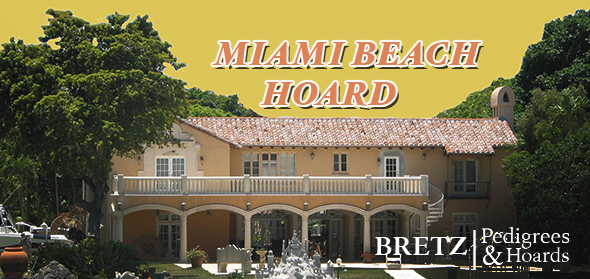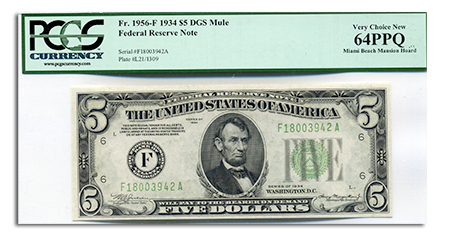
By Rick Bretz for CoinWeek ….
I like to compare this story to the “Wall of Greed” story. It’s similar in many ways, and in many other ways, it’s just the opposite.
Most of the information in this article was developed with the assistance of Marc Michaelsen of Marc Michaelsen Inc. in Boca Raton, Florida. Marc was one of the currency dealers participating in the acquisition of the find. I tried contacting PCGS to gather additional information about who submitted the hoard and how much was submitted, but as of the time of writing it’s been three weeks and counting with no response from them.
The Story
In 2009, a contractor was remodeling a 1920s-era home in the Miami Beach area when he discovered a hoard of approximately 2,000 notes hidden in the wall behind a bathroom sink. The currency was wrapped in a cheesecloth material that was almost completely decayed and while some of the bills were damaged, many were in remarkably good shape given that they were endured the Florida heat, humidity, and hurricanes for approximately 80 years. The hoard consisted of 1930s-era small-size notes and certificates, most having been printed at the Atlanta Federal Reserve Bank. Many of the packs of $5 and $10 notes and silver certificates still had the original bank seals and were in Mint State condition.
A little background for younger readers is probably in order.
In the late 1920s and throughout the ’30s, the United States (and the rest of the world, for that matter) was suffering from the Great Depression. People had little faith in the banks as they failed in record numbers and regular folks lost their life savings. Many people stopped using banks and hid their money in houses and barns and even buried it for safekeeping. As a result, several hidden treasures have been uncovered during recent remodeling as witnessed by the 2006 “Wall of Greed Hoard” and 2009’s “Miami Beach Mansion Hoard”.
 In this case, the contractor notified the homeowner of the find and, surprisingly, the Miami house was still owned by the family of the original owner, but three generations removed. Apparently, the grandparents hid the money in the wall without telling their children, who later inherited the house. In time, the grandchildren became the owners and lived there, not knowing of the currency hidden in the bathroom wall until the contractor discovered the treasure.
In this case, the contractor notified the homeowner of the find and, surprisingly, the Miami house was still owned by the family of the original owner, but three generations removed. Apparently, the grandparents hid the money in the wall without telling their children, who later inherited the house. In time, the grandchildren became the owners and lived there, not knowing of the currency hidden in the bathroom wall until the contractor discovered the treasure.
The grandchildren realized that the currency might have a collectible value so they explored channels to sell the find. Ultimately, the Miami Beach find was purchased by David Manley (Currency House Inc. in Deltona, FL) and Marc Michaelsen. PCGS was the authenticating agency for the hoard and PCGS labeled one set as the “Miami Beach Mansion Hoard” and the other as the “Miami Beach Hoard”. Collectors should note that regardless of the difference in labeling, both sets of currency came from the same Miami Beach find–the only difference being the two dealers that were involved.
The homeowner rewarded the contractor for his honesty by sharing the proceeds of the find with him.
And now you can see why I like to compare the “Wall of Greed” and its confrontation with “Miami Beach” and its cooperation.




